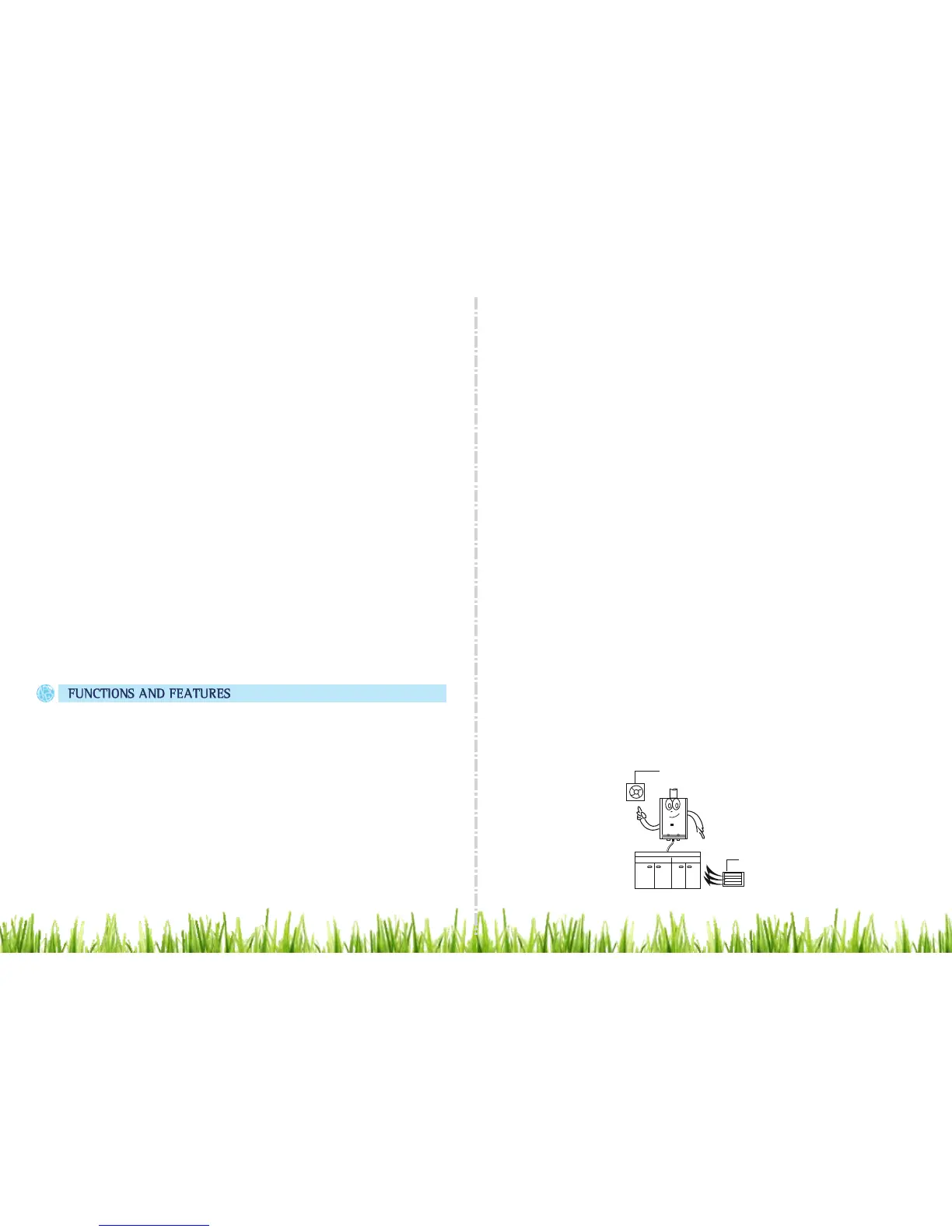0706
4. Low water pressure start up function:
This unit requires only 8 PSI to fire, making it suitable for users with low water
pressure, or those who are using it to supply hot water to upper floors. Please note
that the water flow and water pressure are not the same. Sufficient flow is always
required to keep the overheat safety sensor from shutting the unit off.
5. Anti - freezing protection:
When the temperature is below freezing, remove the water discharge valve to
discharge accumulated standing water inside the internal pipes. This will keep the
unit from freezing.
6. Anti-dry combustion protection:
Should dry combustion occur for any reason, the gas supply will be immediately
and automatically shut off.
7. Over-pressure protection:
When water pressure is over 145 PSI, the unit will automatically relieve the
excessive pressure to avoid damage to its internal components.
PRECAUTIONS:
1. The water heater must be installed in a well-ventilated area. An exhaust pipe of
double walled steel for Class 3 appliances (located at most home improvement
stores in the water heater section) must be installed to discharge the exhaust from
the flame. During operation, the water heater consumes a lot of oxygen, so the
exhaust pipe and outlet hole must be properly installed. Refer to exhaust pipe
section for details.
- Failure to properly install the room intake and exhaust pipe will cause
oxygen depletion in the area around the water heater, which can cause
incomplete combustion. Carbon monoxide poisoning, death and serious
accidents can occur due to incomplete combustion. ALL USERS OF GAS
APPLIANCES OF ANY TYPE SHOULD EMPLOY THE USE OF A CARBON
MONOXIDE DETECTOR.
Exhaust fan
There shall be a air inlet
and a exhaust outlet.
Air inlet
Drawing 01
- Do NOT install the water heater in a sealed room or in a room with poor air
circulation.
- You MUST install the exhaust pipe to properly discharge the exhaust gases.
- Do NOT block the exhaust pipe or the air inlet at any time. This can cause
incomplete combustion and can lead to gas poisoning.
- When the water heater is in use, do NOT touch the body of the heater. Touch the
knobs only, as the body of the heater can become very hot to the the touch.
- Prevent scalds! While using the water heater, always check the water
temperature and adjust as needed before use.
WARNING! There is water contained in the coils of your water heater at all times. If
your water heater is exposed to freezing temperatures, the water in the coils could
freeze, causing a break in the heat exchanger of the unit, or the supply and return
lines. This kind of damage will result in water running freely into the space where
the water heater is located, with can cause flooding. If your water heater is installed
in a geographic location that sees very low sustained temperatures, you MUST
install a backflow preventer on your heater's vent pipe. This will ensure that cold air
cannot fall down into the water heater and cause freezing damage. DO NOT install
this water heater where it may be subjected to a freeze. If your water heater is in an
area where freezing is a possibility, you must turn off the water to the heater and
drain it of any water by using the valve stem at the bottom of the unit and
disconnecting the warm water line. Leave the valve stem and the warm water line
disconnected until you intend to use the water heater.
1. Water - controlled automatic ignition:
When water flow is detected, heating is provided immediately with a double-
ignition device. The flame is sensed by ions. This sensitive control makes the unit
easy and convenient to operate.
2. Auto - cut off protection:
The auto-cut-off protection will shut off the gas supply immediately if the flame goes
out for any reason.
3. Energy savings:
The advanced combustion system comes with a Winter/Summer switch. In winter,
when incoming water temperatures are lower, the winter setting increases the size
of the flame to compensate with extra heating. In summer, when incoming water
temperatures are higher, the summer setting reduces the flame.This provides
more comfort and energy savings in the form of lower gas consumption in warmer
months.

